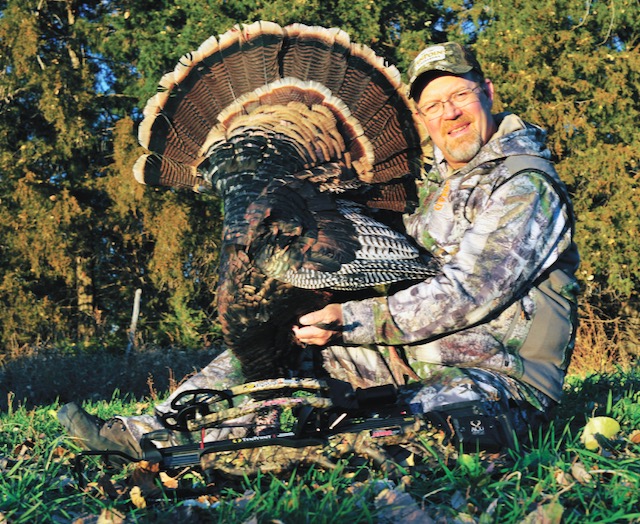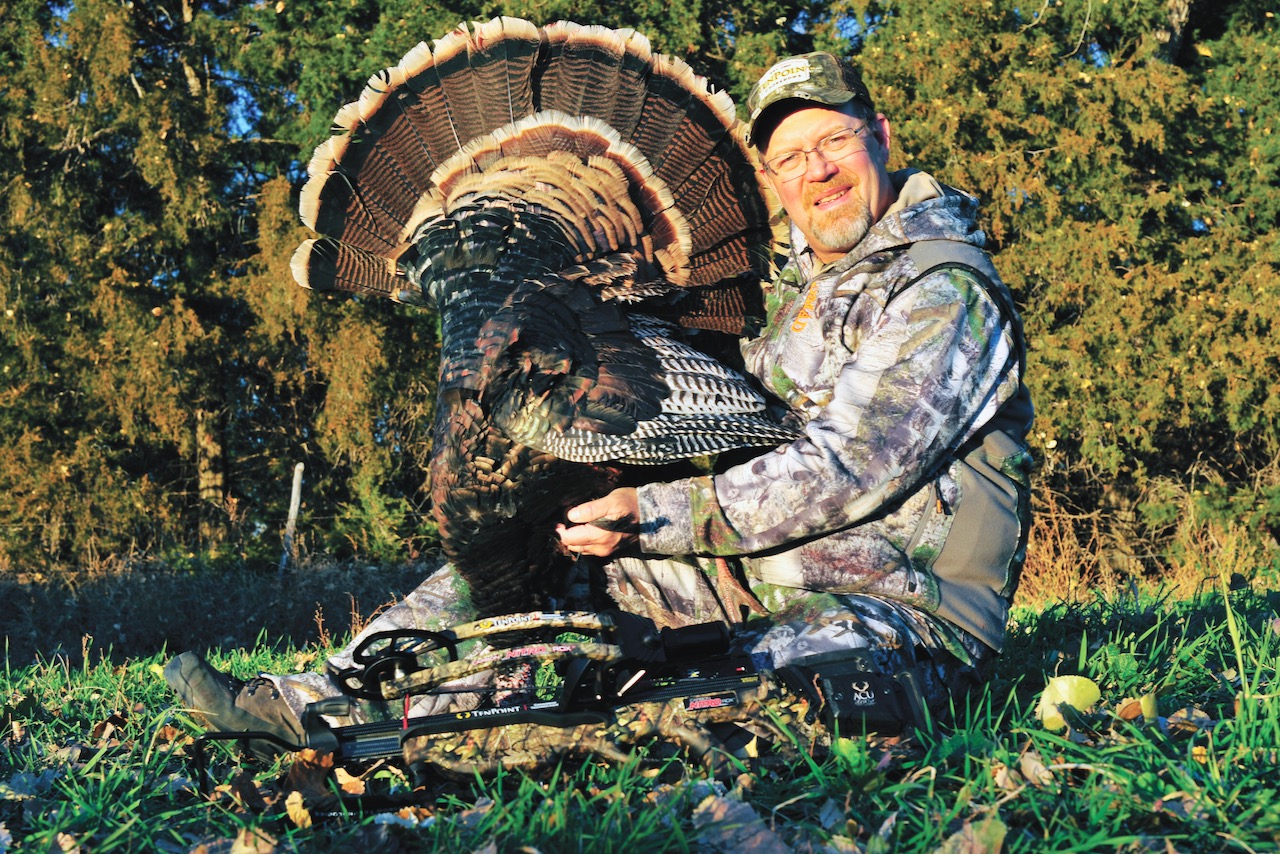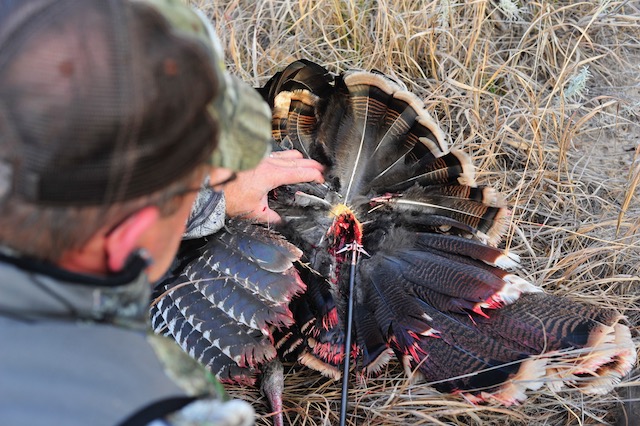Advertisement
Sitting silently in a row of trees, I could hear turkeys working their way towards me. I had my crossbow mounted on my shoulder as I watched for the distinctive heads and feathers to appear down the riverbank. Soon, 20 birds slowly filed past in front of me, and at the tail end of the group was a band of brothers. I was not disappointed. I leveled my crosshairs on the first bearded bird, and when it offered a good shot, I dropped it with a well-placed arrow.
Once again, I was instantly reminded of the advantages of hunting turkeys with a crossbow—quiet and requiring little movement, it’s an excellent stealthy tactic.
Advertisement
#1 MINIMIZE MOVEMENT
One of the biggest advantages of a crossbow is that you can cock it ahead of time, so you don’t have to draw when an animal approaches. That’s particularly helpful around the keen eyes of a turkey. Just use a shooting stick or a forked branch to hold your crossbow level at your shoulder, and you’re ready for any bird that sneaks in or cautiously surveys its surroundings while advancing.
If you happen to be hunting with a partner and sharing a bow, have a plan to re-cock the bow after knocking down a first bird. A dead gobbler often draws the attention of other long beards that might want to lay a beating on the old boy twitching on the ground. When their attention is elsewhere, your partner can re-cock the bow and prepare for another shot.
Advertisement
#2 REDUCE NOISE
A shotgun blast risks displacing turkeys or bumping them from their routine, something you may want to avoid if you’re hunting a small property or want to keep a local flock content to feed in the same area. That’s where a crossbow comes in. Shooting a turkey with a crossbow will momentarily disturb any other nearby birds, but they’ll seldom run long distances, as they would following a shotgun blast.
When you do harvest a bird, stay concealed until the rest of the flock leaves the area so they don’t associate you or your blind with danger. If they wander off oblivious as to what just happened, they’ll be back the next day to give you a chance to fill a second tag.

#3 ADD WEIGHT
Turkeys are incredibly tough creatures that can quickly show the weaknesses of an archery set-up. The feathers, quills, skin, hollow bone and muscle can all rob energy from an arrow faster than the best made archery target. As well, mechanical broadheads often fail when feathers prevent them from opening—the same arrow that typically zips through a deer will sometimes barely penetrate a turkey.
Luckily, the energy of a crossbow allows you to convert some of the speed into more kinetic energy and penetration. Plus, the effective range of the bow is not compromised when you use a heavier arrow and broadhead (although resighting will be required). I recommend a full metal jacket arrow with a 125- or 150-grain broadhead. The advantages become clear when you arrow a giant bird and get the penetration required for lethal results.
#4 TAKE COVER
Since they offer excellent sight lines and conceal your movements—allowing you to re-cock if you miss, for example—blinds are perfect for hunting with a crossbow. They’re also great for introducing someone new to turkey hunting. Just make sure the seats are tall enough that you can see clearly out the window through your scope, and that your arrow has enough clearance when that big gobbler finally steps into range.
#5 SURE SHOTS
To anchor a turkey on the spot, I prefer to arrow it head on, just above the beard (above). That way, the broadhead penetrates past the smaller breast feathers and exits through the spine. This shot can also be made on a bird that’s facing away, severing the spine first. The wing shot is often touted as the best way to a turkey’s heart, but the largest feathers, quills and bones line up in the wing area. This shot can be a killer, but it can also rob your arrow of sufficient energy to get the job done.


